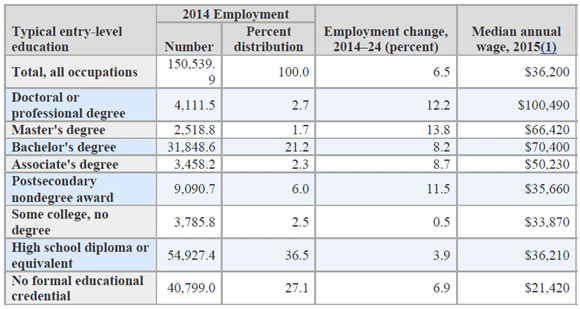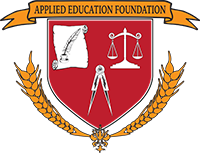“It is no longer solvent for students to understand theoretical knowledge without practical foundations.”[1]
The purpose of the Applied Education Foundation is to build a bridge between the application of knowledge for the real world (i.e. transfer of learning) and the theory of the abstract world. Why do we need such a program? Because our current college prep program serves only a small minority of citizens to the exclusion of a large majority. In addition, the abstract information is fed to students as data disconnected from real world application which is to be recalled for assessment tests at a later date. This has been proven to be a highly ineffective method of teaching and businesses lament how ill prepared graduates are for the world of work. In addition, the country’s electorate is easily manipulated by sophistry spewing from the lips of politicians and bureaucrats.
In a free and equitable society such as ours, this is an intolerable situation that demands serious and significant change!
Let’s look at some preliminary data to observe how ill served we are. The first thing to consider is what the expected demand will be for various credentials. The U.S. Bureau of Labor Statistics (BLS) projects the following:
Occupations that Need More Education for Entry are Projected to Grow Faster
Employment, wages, and projected change in employment by typical entry-level education (Employment in thousands)
Source: U.S. Bureau of Labor Statistics http://www.bls.gov/emp/ep_table_education_summary.htm
Last Modified Date: April 18, 2016. Please note that the “Employment change, 2014-24 (percent)” in the fourth row is the projected growth over that period of time. For example: The bachelor’s degree projected growth is 8.2%; it is not a decline from 21.2% to 8.2%. The BLS’s chart does not make this distinction clear.
As can be seen, the BLS shows the current demand for college degrees (associate’s and higher) to be around 28%, which is expected to rise to approximately 30% by 2024. For postsecondary certificates, the BLS shows a change in demand from 6% to 6.7%.
However, Lumina Foundation informs us that as of 2013, approximately 40% of U.S. 25-64 year olds had a college degree (Lumina’s 2016 annual report – A Stronger Nation https://www.luminafoundation.org/stronger_nation2016 ). This shows there are far too many people overqualified for the number of jobs requiring a college degree – approximately 12% are currently overqualified. And yet the primary remedy being discussed is to provide college for all – and maybe even for free!
The time and money invested in postsecondary education, plus the lost revenue and lost time-on-the-job for the accumulation of experience and seniority in some career, has been lost for the 12% segment of the population that possesses a degree. Plus, the loans that many take to achieve a degree, bury them for years with little to no rise in income to repay such loans.
ACT informs us the population that has the inclination and talent for assessment testing (i.e. the ability to memorize and recall data quickly, which is not an indicator of intelligence as many mistakenly believe) is approximately 28% (The Condition of College & Career Readiness 2015, p. 4). In addition, it has been reported that a minimum of an IQ (another flawed measure of “intelligence”) of 115 is required to have a high likelihood of success in college.
Now let us consider that portion of the population the BLS identifies above as postsecondary nondegree award; some college, no degree; high school diploma or equivalent; and no formal educational credential. The percentage of the population that falls within these categories is 72%. This population is thrown a few crumbs by the educational establishment in the U.S., which is the gatekeeper to most credentials and certainly the most lucrative ones. Why don’t we look at what Switzerland, Finland, Austria, Denmark and Germany do to address this reality? They don’t invest the vast majority of their educational funding into college prep and colleges. They devote a considerable portion of educational funding into preparing individuals for the real world beginning in middle school. This is when it becomes quite apparent whether individuals have memory and recall abilities for the postsecondary testing regime academia is optimized for.
We are not advocating copying other countries; only to observe and learn what might make sense for the U.S. and perhaps adopt some of those attributes. The Applied Education Foundation is not dedicating itself to career/vocational education, but rather to a broad education grounded in the useful arts and sciences – i.e., applied studies – which career education would certainly benefit by. With a broad foundation being set, individuals will be able to adjust to a career seamlessly, and, if necessary, easily change careers if and when the need arises.
It is obvious the educational system, the credentialing system, our expectations and perceptions of what education even means, has become a Leviathan with no sense of direction. It is like a ship without a map, rudder, and compass. It is time to take a serious look at the real purpose of education and how it can and must serve individuals first and society second. This will mean that the educational paradigm will be heading into typhoon weather. The educational landscape will not look the same afterward due to the destruction gale-force winds wreak. But as in all things, new paradigms come from such destruction. The term disruptive innovation, coined by Clayton Christensen, is an apropos description of the course that lies ahead.
It is the purpose of this Foundation to begin the discussion of necessary change by exposing the flaws in the education system – which is done in a blunt and aggressive way – and then to make suggestions for a new heading. Once this has been accomplished, a team of open-minded people from many different walks of life will need to come together to formulate various pathways flexibly designed for individual students to help them find their way to a successful life in society. Academics will need to play a role in this effort but not the primary one due to their biases and lack of understanding of the real needs of citizens – they are simply too disconnected from reality as the tenure concept reflects.
Perhaps the two most important points that will be emphasized throughout this effort will be based on multiple intelligences found in all human populations, as presented by Howard Gardner; plus the quality of education over quantity. Quantity now dominates with little attention to quality as can be seen in our country’s dismal literacy and numeracy abilities and individuals’ ill preparedness for work and political intercourse.
The following essays are offered to any who may have a similar passion and concern regarding what passes for education. It is my intent to shed the light of day on this Leviathan we have all inherited – which restricts school teachers from helping many who are most in need – and to hopefully disinfect it by the sun’s rays.
I am deeply indebted to the many authors, researchers, journalists, etc. that have been quoted extensively. My work stands on their shoulders.
[1] Carter, Jarrett, Education Dive, Survey - College Business Officers Say Higher Ed in Crisis, July 18, 2016.

